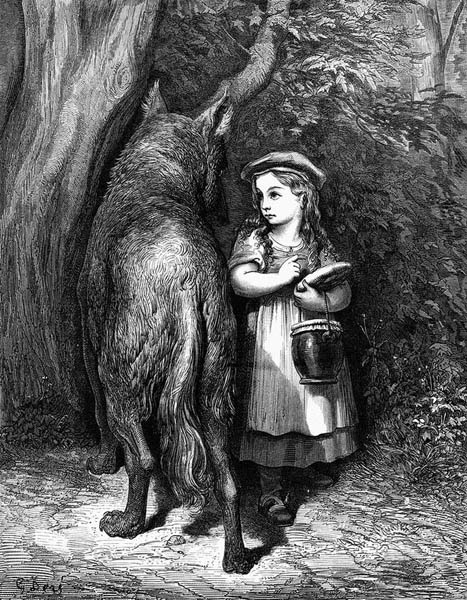Little Red Riding Hood is a story we all like to think of as familiar and pretty straightforward. However, the original is not so pleasant and actually would give most children‚ and many adults‚ nightmares. While originally meant to be a morality tale, we recognize the violence and dangerous situations towards children as a hugely popular theme in folk tales, carrying through to present-day movies.
A basic plot of a little girl going through the woods to deliver treats to her grandmother has large scope for things to go awry. The earliest versions of the story contain cannibalism, bestiality, and allusions to rape, alongside other non-child friendly themes. Charles Perrault told this tale, amongst others like Sleeping Beauty, to the court of Louis XIV, where they would have been wildly entertaining. The moral of not talking to strangers is not necessarily lost, but is both serious and tongue-in-cheek.
Perrault was the first to systematically write these common stories down transforming folktales into the formal fairytales. Gustave Dore, a prolific 19th-century artist, printmaker, engraver and illustrator, did a series of illustrations for Perrault’s Book of Fairytales.
In this illustration, Little Red, on her way to her grandmother’s house, first encounters the Wolf. The black and white engravings capture the ominous overtones of what is possibly going to happen to this little girl. Her facial expression says that she thinks she is in control of what is happening, but we know better as the Wolf circles around her. The light, cherub face and her childish dress starkly contrast the dark and eerie woods, symbolizing her innocence. By not seeing the wolf’s face, we are left to imagine his sinister expression.
Dore’s engravings are true to Perrault’s dark tales, and frighten both the children in the stories and those listening. This is not a bedtime story and nor for the faint of heart. Yet today it has been sanitized to the point of easy reading for five-year-olds. These stories have been changed in their purpose, rather than told to frighten children into behaving, they are now intended to entertain and sell products.

